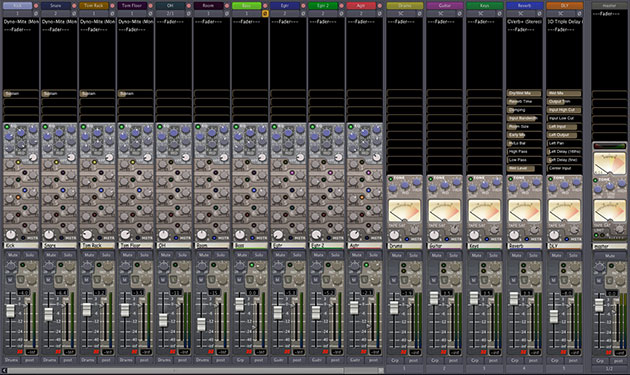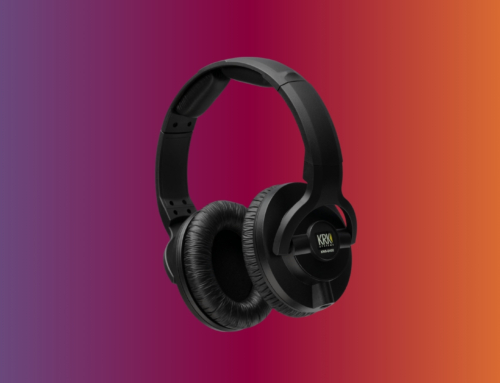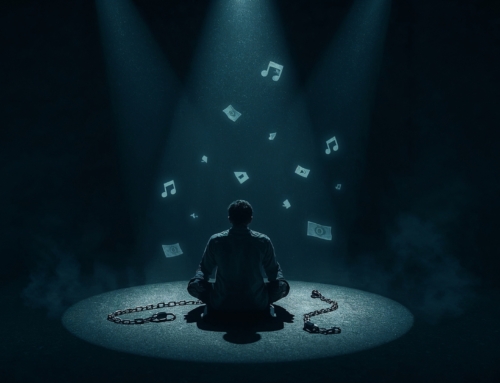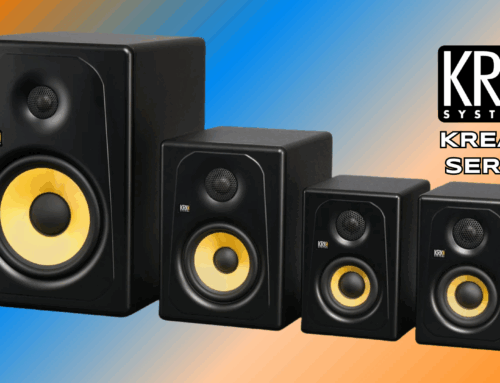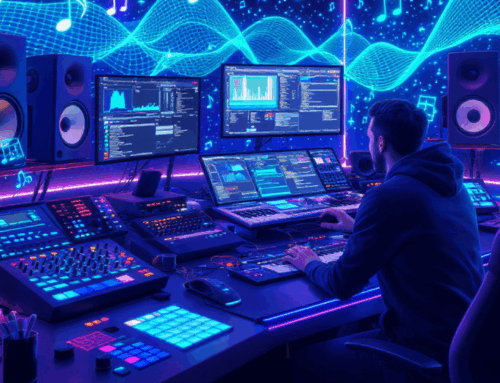What is Harrison Mixbus? It’s a DAW, sure – but it’s also a professional mastering tool all wrapped up in an affordable and easy-to-use package. By now, we’re so used to the vast ocean of all-in-one recording, editing, mixing, and mastering solutions costing $400 and up in an attempt to be a one-stop-shop – just vying to be the only piece of software you’ll ever need to purchase. Harrison Mixbus is different. A mere $219 will buy you a full-featured package which accomplishes a very specific goal: to make your mixes – whether crafted within Mixbus or without – amazing. This program isn’t for high school kids who want to be the next Skrillex – it is, despite its cost, a pro-level software solution for those wishing to take their full-fledged musical ideas to the next level.
The way I and many others use Mixbus, subtlety is the name of the game. For the same reason big-time movie producers choose to use Harrison mixing consoles for their audio, you would use this program – it’s not necessarily to perform a certain function, but to achieve a certain sound. The tweaks in dynamics and tone you would apply in Mixbus are not perfunctory audio edits, but rather are designed to impart a specific sound and very finely tuned color to the mix. It may seem strange to use this sort of language to describe software rather than hardware, but it’s true that well-designed code and professional-grade DSP algorithms can go a long way in shaping the final sound you can achieve with a virtual Harrison console. In order to achieve that sound, many producers will simply import stems into Mixbus and apply these subtle audio tweaks to color music that’s already been through the stages of arranging and sound design in a different piece of software. In the end, Mixbus’s compression, tape saturation, and EQ are at the sonic heart of where this software shines.

First, let’s talk about how we get there. On a basic level, Mixbus is a Harrison rework of the open-source DAW Ardour. Yes, that means it works on Linux! Ardour is a pretty decent recording software on its own (especially considering that it costs $1), with a timeline and mixer, similar to Reason without the virtual rack. All the basic tools for recording are there, but interestingly there is no support for virtual instruments, which means your software synths will have to sit this one out. But that’s okay for our purposes, since we used our soft synths to create stems in a separate piece of software. VST effects are also a bit tricky to use since Mixbus is very strict about keeping mono VSTs on mono tracks and stereo VSTs on stereo tracks, but that’s okay since 1) Mixbus includes the basics like reverb and delay and 2) you might just be done with all your VSTs by the time you reach final mixing and mastering. Recording your hardware instruments and vocals is an overall painless process, but you could just as easily record in Ardour, and it’s not why you’d want to buy Mixbus. For that, we turn to the mixing console.
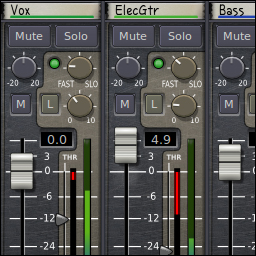 The mixing window, which allows access to everything that’s truly wonderful about this software, lays everything out in front of you plain and simple. No need for windows on windows on windows of virtual studio clutter! Each individual channel has a compact and highly efficient array of knobs – trim, EQ, a high-pass filter, bus routing options, and the almighty compressor/limiter/leveler are right there, ready for you to begin tweaking. While you’d think the simplicity of the interface would lead to some detrimental sacrifices in usability (for example, the EQ section has a total of six knobs, the compressor section has two), this is really not the case. In fact, it seems more like Harrison has removed unnecessary function and gotten down to what is really needed to make your mix shine. I firmly believe that the relative scarcity of knobs provides you with exactly the tools you need without allowing you to confuse or second-guess yourself. In addition to the pro-level EQ and compressors, one of the big ways Mixbus adds welcome color to your sound is the tape saturation knob. With just a few adjustments on the dial, you can add so much warmth to your sound you’d swear it didn’t come from a laptop. The Mixbus tone proves that just because your music is digital doesn’t mean it has to sound crispy!
The mixing window, which allows access to everything that’s truly wonderful about this software, lays everything out in front of you plain and simple. No need for windows on windows on windows of virtual studio clutter! Each individual channel has a compact and highly efficient array of knobs – trim, EQ, a high-pass filter, bus routing options, and the almighty compressor/limiter/leveler are right there, ready for you to begin tweaking. While you’d think the simplicity of the interface would lead to some detrimental sacrifices in usability (for example, the EQ section has a total of six knobs, the compressor section has two), this is really not the case. In fact, it seems more like Harrison has removed unnecessary function and gotten down to what is really needed to make your mix shine. I firmly believe that the relative scarcity of knobs provides you with exactly the tools you need without allowing you to confuse or second-guess yourself. In addition to the pro-level EQ and compressors, one of the big ways Mixbus adds welcome color to your sound is the tape saturation knob. With just a few adjustments on the dial, you can add so much warmth to your sound you’d swear it didn’t come from a laptop. The Mixbus tone proves that just because your music is digital doesn’t mean it has to sound crispy!
As I mentioned before, I don’t really use Mixbus for all my recording and editing adventures – there are far too many alternatives out there which specialize in recording and arranging, whereas Mixbus specializes in mixing and mastering. Luckily, Mixbus provides multiple options to help you unlock its potential as a mastering-only tool. One option is batch importing of stems, all nicely filed away into different tracks. This is especially handy if your recording/arranging DAW allows batch stem bouncing. If so, the process couldn’t be easier, and takes only about five minutes. (Since you’re going to be doing the majority of your mixing in Mixbus, it’s not a bad idea to normalize your stems when exporting.) From there, you can make your own submixes within Mixbus, adjust levels, compress, find EQ pockets – all the fun stuff you’d normally do during mixdown, only this time I guarantee you’ll notice how much better it sounds.
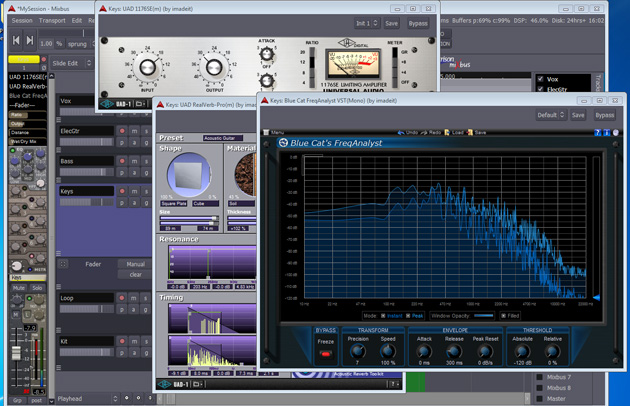
Another option for bridging the two DAWs is Jack – a virtual audio interface that helps you link together audio sources and receivers within your computer. It’s sort of like ReWire, but for the open source crowd. By routing tracks through Jack into Mixbus, you can create and arrange your audio in one window while mixing and compressing in the other. There are advantages and disadvantages to this approach. The main advantage is the ability to efficiently make edits to your arrangement to aid in the mixing of your various sonic elements. However, this approach is potentially psychologically harmful in that it will inevitably lead you down the endless path of mixing, tweaking, editing, reworking, and knob-twiddling that accomplishes very little but to confound creativity. At some point, you just have to consider your song written and get down to the final mix.
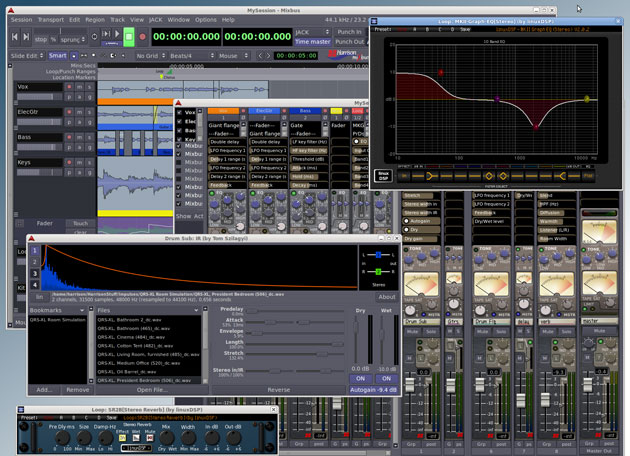
The remedy to this toxic psychology is one of the things that makes using Mixbus so great. The production mindset dictating that you compose first and mix later is, I believe, a healthy one. It makes you think about things differently – if you’re constantly cycling between mixing and arrangement, you may never be satisfied. The fantastic and well-produced virtual technology behind this whole process makes it all the more worthwhile. You can really tell that Harrison put their heart and soul into the code to achieve perfect sound. It’s not quite a full-sized Harrison console, but it’s multiple orders of magnitude cheaper, so I suppose it’ll just have to do. For my purposes, and especially for the low cost, Harrison Mixbus is a no brainer.
